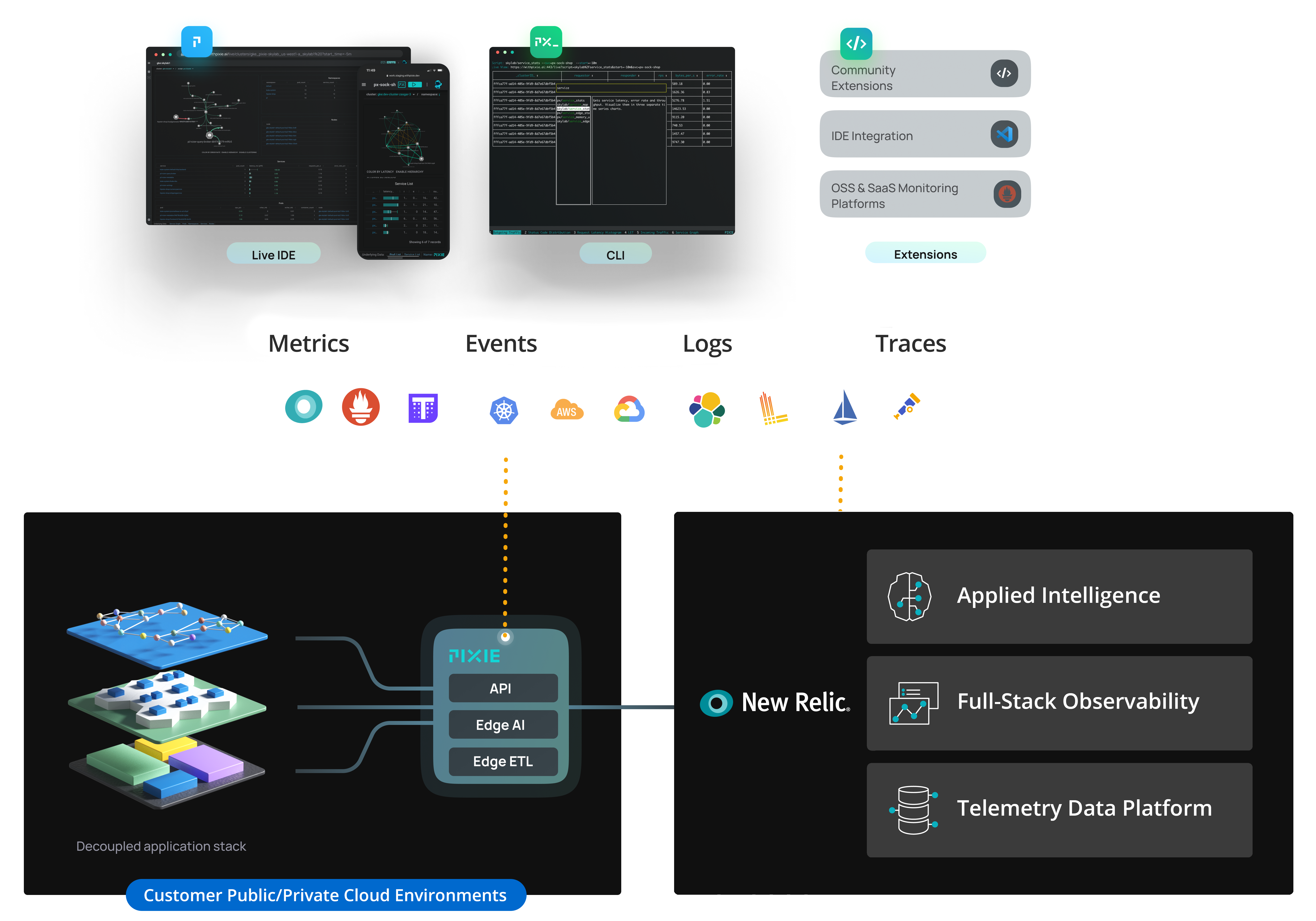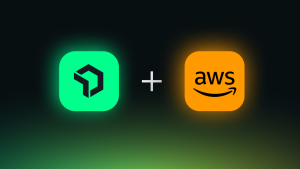Kubernetes enables developers to build highly distributed applications with speed and organizational agility. However, these advancements have left a visibility gap: monitoring, securing, debugging, and troubleshooting these applications remains challenging and time-consuming. Getting access to high-quality telemetry data typically requires a never-ending effort of deploying agents into polyglot stacks and instrumenting code, as well as managing the volume of telemetry data collected.
That’s why I’m excited to announce that New Relic has signed a definitive agreement to acquire Pixie Labs, the next-generation observability platform for applications running in Kubernetes. With a single CLI command, developers are able to see all of their applications’ metrics, events, logs, and traces. Pixie’s technology removes the need to add instrumentation code, set up ad hoc dashboards, or move data off of the cluster, saving developers valuable time so they can focus instead on building better software. Skip the code changes and get instant Kubernetes observability.
With the anticipated Pixie by New Relic, you can get programmatic, unified access to application performance data. Pixie automatically harvests telemetry data, leveraging technology like the extended Berkeley Packet Filter (eBPF) at the kernel layer to capture application data. Pixie’s edge-machine intelligence system, designed for secure and scalable auto-telemetry, connects this data with Kubernetes metadata to provide visibility while maintaining data locality.
Pixie’s developer experience is driven by three fundamental technical breakthroughs:
- No-instrumentation data collection: Pixie uses technologies such as eBPF to collect metrics, events, logs, and traces automatically from the application, infrastructure (Kubernetes), operating system, and network layers. For custom data, you can collect logs dynamically using eBPF or ingest existing telemetry.
- Script-based analysis: Pixie scripts provide a code-based approach to enable efficient analysis, collaboration, and automation. You can use scripts from Pixie’s native debugging interfaces (web, mobile, and terminal); scripts are community-contributed, team-specific, or custom built. Additionally, you can analyze data from integrations with existing Infrastructure monitoring and observability platforms.
- Kubernetes native edge compute: Pixie runs entirely inside Kubernetes as a distributed machine data system, meaning you don’t need to transfer any data outside the cluster. Pixie’s architecture gives you a secure, cost-effective, and scalable way to access unlimited data, deploy AI/ML models at source, and set up streaming telemetry pipelines.
Pixie + New Relic = A Developer Win
New Relic is committed to supporting and contributing to open source software, and with the planned acquisition of Pixie, we’re doubling down on that commitment. Born as a project focused on serving the developer community, Pixie’s community actively builds and contributes to open source Pixie scripts, creating reusable assets that accelerate observability for developers around the world. Today we’re going one step further and announcing our plan to contribute a self-managed version of Pixie as an open source project.
As we move forward together, I’m excited by the opportunity to accelerate Pixie’s roadmap to empower developers with instant Kubernetes-native application observability. Pixie’s technology will complement New Relic’s powerful Kubernetes observability features in New Relic One, including the Kubernetes Cluster Explorer. Optionally, if customers choose to send their Pixie-generated telemetry data to New Relic One in the future, they’ll gain features including advanced correlation, intelligent alerting, powerful visualizations, and scalable data retention.
Our mission is to empower developers to deliver more perfect software. It’s clear that Pixie’s obsession with delivering a magical developer experience is a perfect fit for us. By joining forces, we’ll plan to deliver on this shared mission by executing on three key initiatives:
- Pixie Core: A completely open source and self-managed version of the Pixie platform that enables ubiquitous access to observability for developers building applications on Kubernetes.
- Pixie by New Relic: A fully managed Pixie solution that provides one-click integration with New Relic One.
- Pixie by New Relic, Enterprise Edition: Industry-specific solutions for sectors such as Media, Telecommunications, and Government that allow you to install Pixie entirely inside your production clusters while meeting compliance, data security, support, and performance requirements.
Join the public beta and get started today
From startups to internet-scale global enterprises, plenty of users are seeing the power of Pixie. It’s time to join them. Install the Pixie CLI and get started. You’re just a few steps away from unlocking the powerful observability capabilities of the Pixie platform.
This post contains “forward-looking” statements, as that term is defined under the federal securities laws, including but not limited to the addition of Pixie Labs and the benefits of this anticipated acquisition on New Relic’s opportunity to serve the growing Kubernetes market, potential features customers can gain upon future ingestion of telemetry data from Pixie into New Relic, expectations as to the increase in empowerment to developers as a result of this combination, the anticipated timing and completion of the deal, as well as any additional plans, initiatives and benefits of the future purchase and integration of Pixie by and into New Relic. The achievement or success of the matters covered by such forward-looking statements are based on New Relic’s current assumptions, expectations, and beliefs and are subject to substantial risks, uncertainties, assumptions, and changes in circumstances that may cause New Relic’s actual results, performance, or achievements to differ materially from those expressed or implied in any forward-looking statement. Further information on factors that could affect New Relic’s financial and other results and the forward-looking statements in this post is included in the filings we make with the SEC from time to time, including in New Relic’s most recent Form 10-Q, particularly under the captions “Risk Factors” and “Management’s Discussion and Analysis of Financial Condition and Results of Operations.” Copies of these documents may be obtained by visiting New Relic’s Investor Relations website at https://ir.newrelic.com or the SEC’s website at www.sec.gov. New Relic assumes no obligation and does not intend to update these forward-looking statements, except as required by law.
The views expressed on this blog are those of the author and do not necessarily reflect the views of New Relic. Any solutions offered by the author are environment-specific and not part of the commercial solutions or support offered by New Relic. Please join us exclusively at the Explorers Hub (discuss.newrelic.com) for questions and support related to this blog post. This blog may contain links to content on third-party sites. By providing such links, New Relic does not adopt, guarantee, approve or endorse the information, views or products available on such sites.




